How to Choose the Best Yard Size for Your Family
When searching for the best place to call home, it’s easy to focus on the floor plan, kitchen finishes, and bedroom count—but what about the yard? Your yard, just like your home, should be a place the whole family can enjoy.

Whether you dream of a sprawling backyard oasis for summer barbecues or prefer a low-maintenance space that won’t keep you tied to a lawnmower, the right yard size can make a big difference in your daily life.
From entertaining and outdoor activities to upkeep and budget, there’s a lot to think about! So, how do you find the perfect balance? Let’s explore what to consider when choosing the ideal yard size for your family.
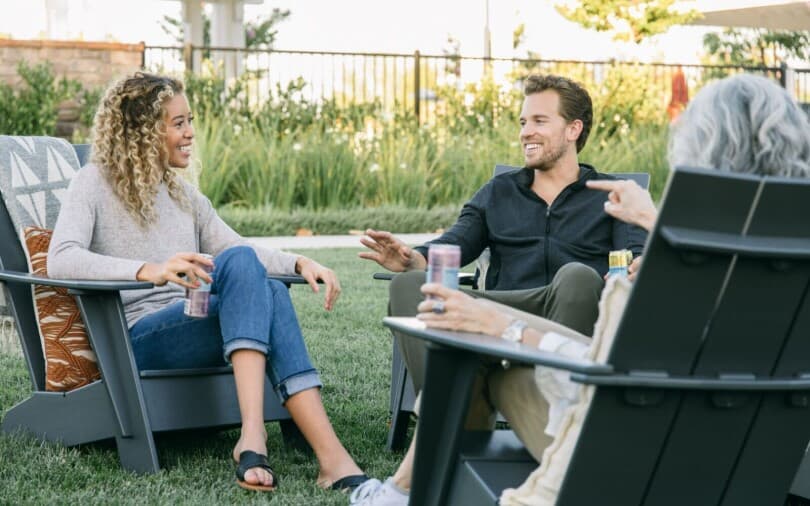
1. Assess Your Family’s Needs and Lifestyle
Understanding how your family enjoys spending time outside is a major factor when considering the ideal yard size. If you prefer a low-maintenance lifestyle, it’s unlikely you’ll develop a love for mowing the lawn just because you have a big yard.
Think about how you prefer to spend time outside and be realistic about how much effort you’re willing to put in (or pay for) to maintain the space.
Some things you’ll want to consider:
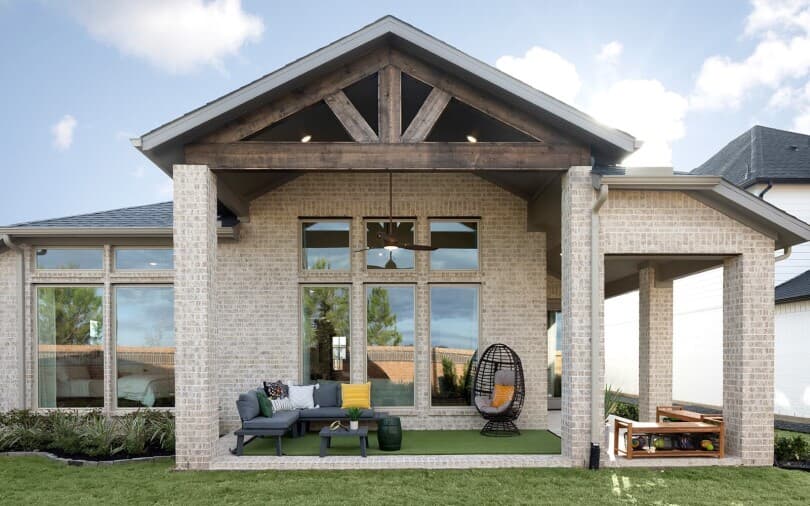
Norwich Floor Plan, Traditional Homes Collection, Elyson Community, Katy, Texas
Outdoor Activities
When you envision a beautiful sunny day spent outside, what do you see? Do you picture a lively backyard barbecue hosting lots of family and friends? Do you see yourself throwing a ball around with your dog or kids?
Maybe all you need is a quiet corner to catch some rays and read a book. Or perhaps you want an extension of your indoor living space, complete with a dining area, outdoor kitchen, and a fire pit for roasting marshmallows. You may want to start a backyard garden to enjoy fresh herbs and vegetables or create an oasis of striking flowers and lush plants.
Be realistic about how you spend your time outside. If the great outdoors is not your cup of tea, you may be happier with a trendy downtown condo than a sprawling single-family home with a large yard in the suburbs.
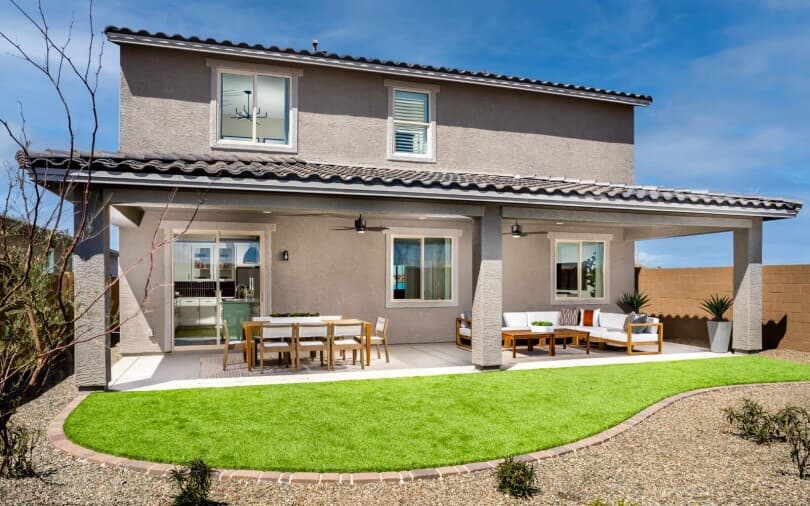
Ponderosa Floor Plan, Highland Ridge Collection, Alamar Community, Avondale, Arizona
Household Composition
Who will be living in the house and using the yard? Are you a young couple eager to start a family or finally get a dog? Maybe you’re empty nesters (or soon to be) and ready to enjoy a low-maintenance lifestyle where you can spend more time traveling than doing yard work.
A bigger yard may be better suited for active pets where they can run and play, your kids’ outdoor playsets, practicing sports, or exploring. A smaller yard may give you more freedom. A weeks-long vacation or an afternoon in the city may be easier to plan when you don’t have yard work and plant care on your to-do list.
Consider who will be using the space—both now and as your family changes—to ensure the investment you make today serves your family’s needs for years to come.
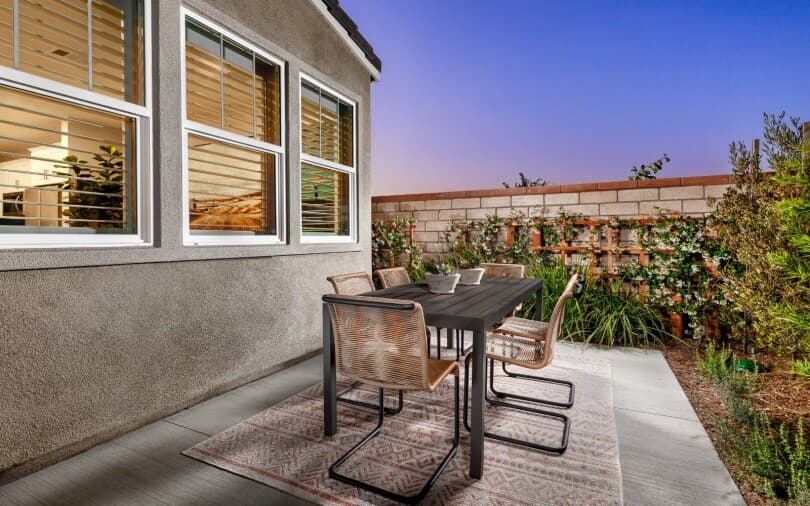
Residence 2 Floor Plan, Dwell Collection, New Haven Community, Ontario, California
Maintenance & Costs
Larger yards require more of just about everything compared to smaller ones, including time, effort, resources to maintain them, and even property taxes. A larger yard will take more time to mow, weed, and prune, and if you want to outsource the work, it’ll come at a cost.
If you start with a blank canvas, a larger yard will cost more to landscape, furnish, and decorate. You’ll also want to consider the cost of irrigation, including installation and overall water usage.
A smaller yard may be more cost-efficient, with significant savings in both upfront costs and long-term expenses. Smaller yards typically have lower property prices, reduced property taxes, and less maintenance costs. You’ll also spend less on outdoor furniture, fencing, and hardscaping, making a smaller yard a budget-friendly choice. Keep in mind that a smaller size may limit your outdoor activities and overall ability to use and enjoy the space.
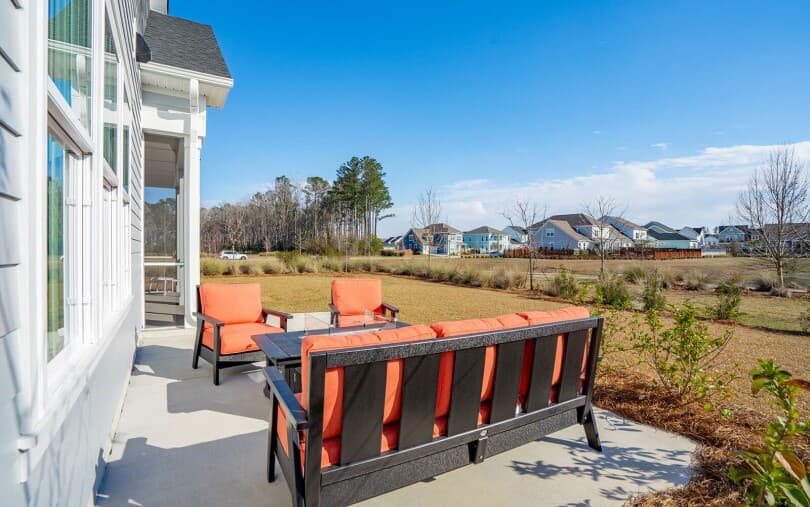
Towson Floor Plan, Single Family Homes Collection, Nexton Community, Summerville, South Carolina
Location
Your local climate plays a large role in determining the practicality and maintenance of your yard. Weather conditions can impact everything from landscape choices to the time and effort required to keep your yard looking its best.
A hot, arid climate makes it harder to maintain a lush lawn, and the heat may keep you indoors. In areas with harsh winters and heavy snowfall, a large yard may mean more extensive snow removal, and the chill may make your yard unusable during cold seasons.
You’ll also want to consider the norms within your neighborhood. Finding a sprawling lot may be unrealistic if small yards are standard in the area. Conversely, if most homes have large yards, finding a smaller one will be harder.
Finding a neighborhood with shared green spaces, parks, or walking trails may be the perfect solution. One of the benefits of living in a master-planned community is access to amenities designed to create a vibrant lifestyle for the residents. You can enjoy wide-open trails or grassy play spaces without being responsible for any of the maintenance yourself—sounds like a win!
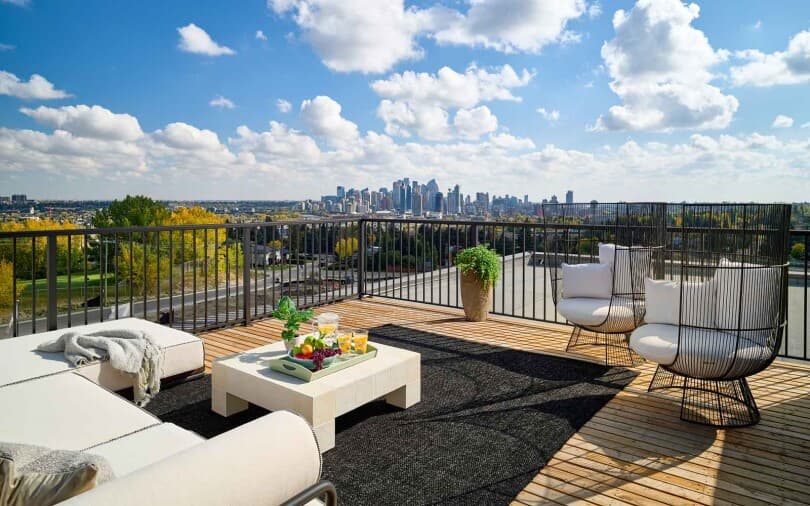
Rouge Floor Plan, Townhomes Collection, Crown Park Community, Calgary, Alberta
2. Consider Different Yard Size Options
Not all yards are created equal—each size comes with its own benefits and trade-offs. But what’s considered a “small yard” compared to a “large yard?”
Small Yards (under 5,000 sq. ft.)
Ideal for urban and suburban homes, small yards typically offer a more manageable outdoor space with minimal upkeep.
Pros:
- Low maintenance—less mowing, watering, and weeding.
- More affordable—lower landscaping costs and reduced property taxes in some areas.
- Easier to landscape creatively—think vertical gardens, cozy patios, and container plants.
- Ideal for busy homeowners or those who prefer a lock-and-leave lifestyle.
Cons:
- Limited space for kids or pets to play.
- Less room for outdoor entertaining, large gardens, or recreational features like fire pits or playsets.
- Privacy may be more challenging in tightly packed neighborhoods.
Best For: City dwellers or those who prefer a low-maintenance yard.
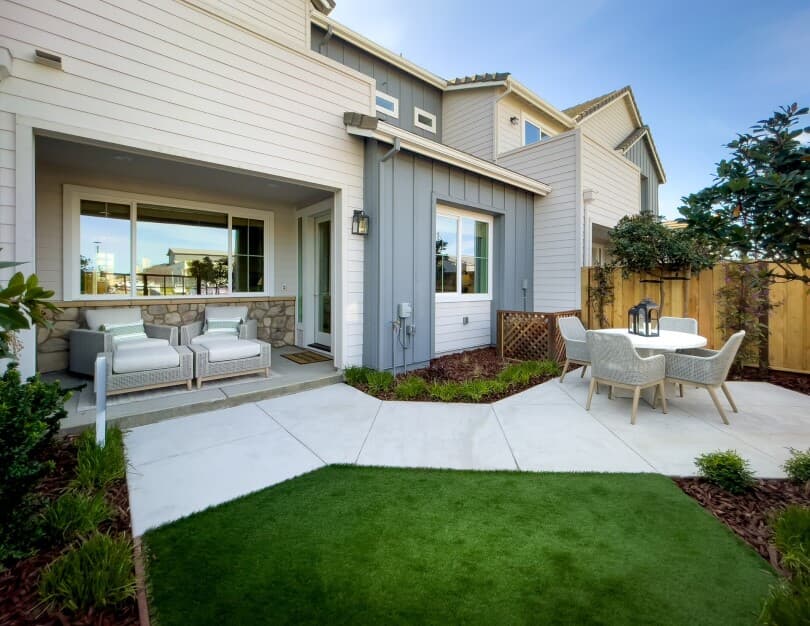
Residence 2 Floor Plan, Copperleaf Neighborhood, Napa RiverSound Community, Napa, California
Medium Yards (5,000–10,000 sq. ft.)
A medium yard provides a great balance between space and upkeep, with enough room for outdoor activities without the maintenance of a large lot.
Pros:
- Provides enough room for entertaining, children’s play areas, and pets.
- Allows for a mix of landscaping elements, such as open lawns, gardens, patios, and pergolas.
- More privacy compared to small yards.
- Easier to maintain than a large yard while still offering ample outdoor space.
Cons:
- Still requires regular lawn care, weeding, and landscaping upkeep.
- Can be expensive depending on location and irrigation needs.
- May not be large enough for multiple entertaining zones, pools, or sports courts.
Best For: Families who want a balance of space and maintenance, those who enjoy some gardening, and homeowners who like to entertain.
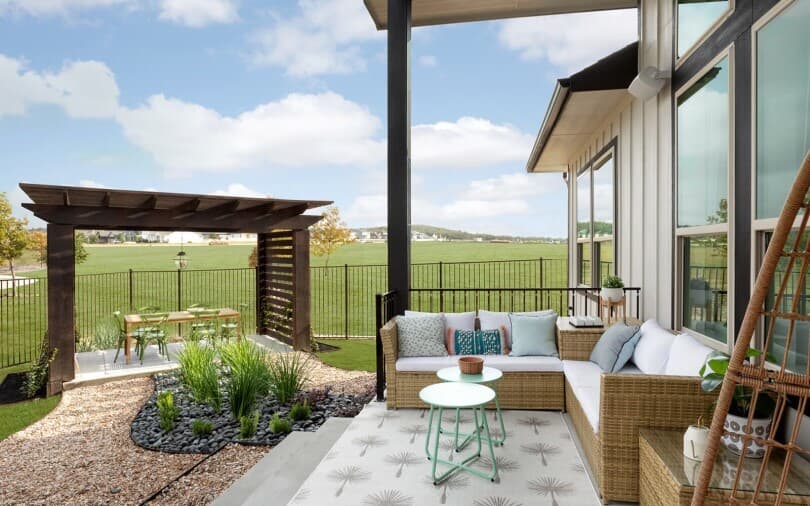
Claremont Floor Plan, Traditional Homes Collection, Easton Park Community, Austin, Texas
Large Yards (Over 10,000 sq. ft.)
Expansive yards provide the ultimate outdoor living experience, but they also come with increased responsibilities.
Pros:
- Ideal for gardening, recreation, and outdoor entertaining.
- Plenty of room for features like a swimming pool, fire pit, outdoor kitchen, or even a guesthouse.
- More privacy and space between neighbors.Great for families with kids and pets who need room to roam.
Cons:
- Requires more time, effort, and resources to maintain.
- Higher water usage and landscaping costs.
- Can be expensive to fence and furnish with outdoor features.
- More responsibility in terms of yard work or hiring professionals.
Best For: Homeowners who love outdoor living, gardening enthusiasts, or those who want a private retreat.
The key is to use all the space available in a smart way. If you have a smaller yard, utilize the vertical space with trellises, hanging plants, or wall-mounted planters. Add depth and dimension to make your yard feel bigger than it actually is. Whatever you do include, be sure it fits the scale—putting in a gigantic playset that takes up most of your backyard isn’t the best way to go.
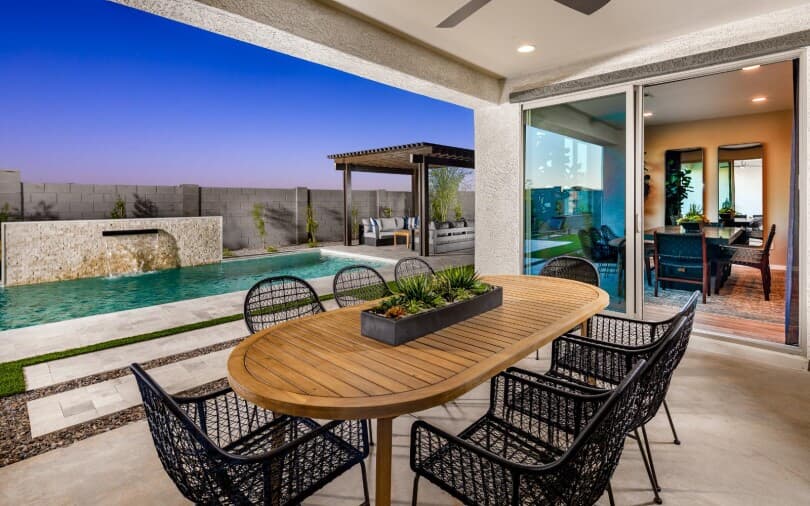
Solstice Floor Plan, Mariposa Collection, Blossom Rock Community, Apache Junction, Arizona
3. Think Beyond Size: Functionality Matters
Your yard doesn’t have to be huge to be enjoyable! A well-designed yard should enhance your lifestyle, make the most of the space available, and create a pleasant outdoor experience.
The key is to maximize the space’s functionality. Your yard needs to suit your family’s needs, whether it’s relaxing, entertaining, or simply being a place to play. Think about how your household would best use the space and design it accordingly.
Optimize your yard’s area by using zoning techniques for different activities. Incorporate things like a dining space, a lounging area, and a garden. A well-planned yard should serve multiple purposes while maintaining a seamless and aesthetically pleasing flow.
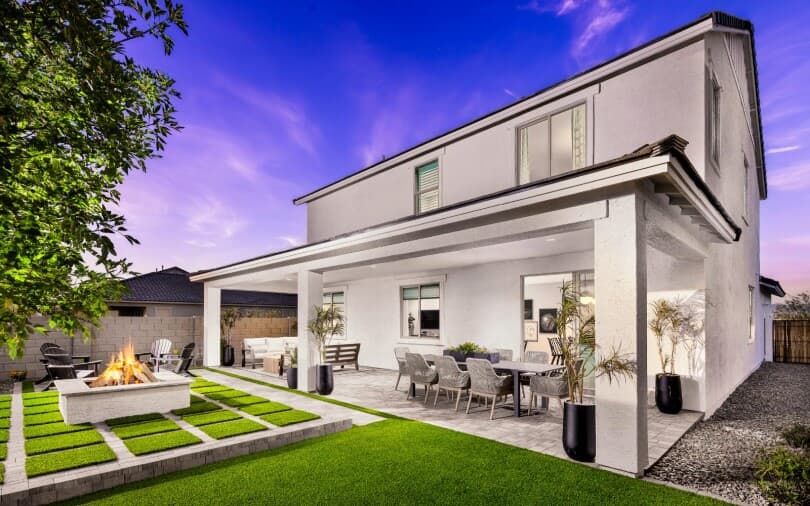
Ponderosa Floor Plan, Laurel Collection, Blossom Rock Community, Apache Junction, Arizona
If you need to be more efficient with your space, invest in versatile furniture. Items like benches with storage, modular seating, or a fire pit that can double as a table can adapt to your needs in different situations.
If you have a bit more room, strategically landscaping your yard can make it feel more spacious, inviting, and visually appealing. Consider adding a patio or deck to create a defined outdoor living area and extend your usable space beyond the home’s interior. A pergola or shade structure adds architectural interest while providing relief from the sun.
A hammock or comfortable seating area creates a great zone for relaxation. An outdoor dining area and built-in grill station takes entertaining family and friends to the next level. Designate an open area for the kids or dogs to have room to run. Giving each space a purpose allows you to utilize each and every part of your yard.
Consider Privacy
A big yard can give your family more than just room to play and relax—it can also offer privacy. If you don’t want neighbors or passersby to see who’s at your home and what you’re doing (or if you don’t want to see and hear everything your neighbors are up to), a large yard can put a healthy amount of space between you.
A smaller yard may mean your neighbors are close, but you can still prioritize privacy if that’s a concern for you—you’ll just have to be strategic with your design. Tall hedges, privacy screens, trellises with climbing plants, or even a well-placed pergola can provide separation from neighbors without needing a massive yard.
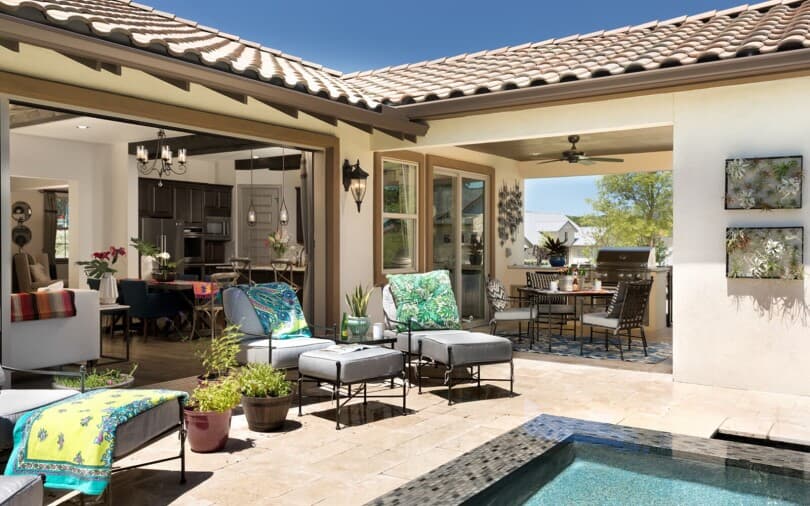
Clarkson Floor Plan, Traditional Collection, Kissing Tree Community, San Marcos, Texas
4. Choosing the Right Yard Layout
How you design and organize your yard can make a huge difference in its enjoyability. Even the smallest yards benefit from a well-thought-out layout. A well-designed yard should maximize its functionality, be aesthetically appealing, and ensure every inch of space is put to good use.
Open-Concept Layout
If you love wide-open spaces without barriers, an open-concept yard is for you. This layout focuses on expansive lawn areas with minimal hardscaping or blockages. An open-concept layout is great if you have kids or pets that need space to run and play or if you prefer calming green expanses without visual stopping points.
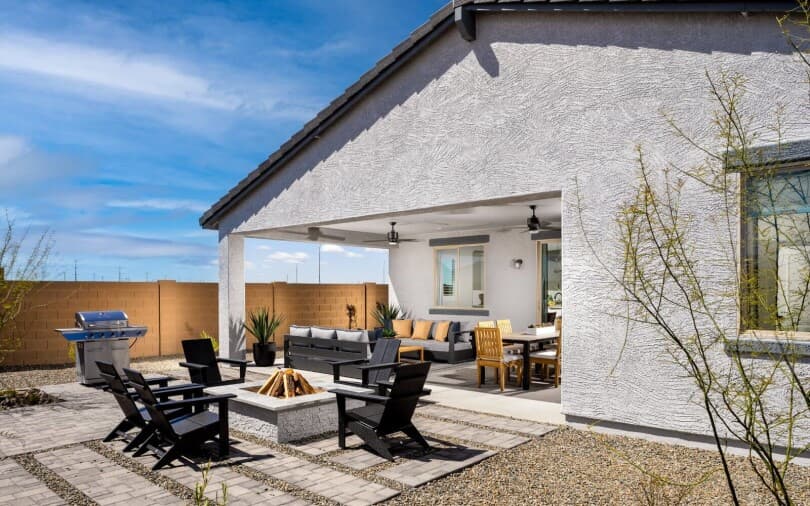
Laredo Floor Plan, Highland Ridge Collection, Alamar Community, Avondale, Arizona
Zoned Layout
A zoned layout divides your yard into distinct areas for different activities. For example, you can have a patio for dining, a fire pit for lounging, and a kids’ play space. Zoning your yard creates a well-balanced and structured area that serves multiple purposes, effectively utilizes every part of your yard, and maintains a cohesive look.
If you need inspiration, check out our blog “15 Backyard and Outdoor Décor Ideas to Spruce Up Your Yard for Summer” for tips on creating smart zones to fit your yard.
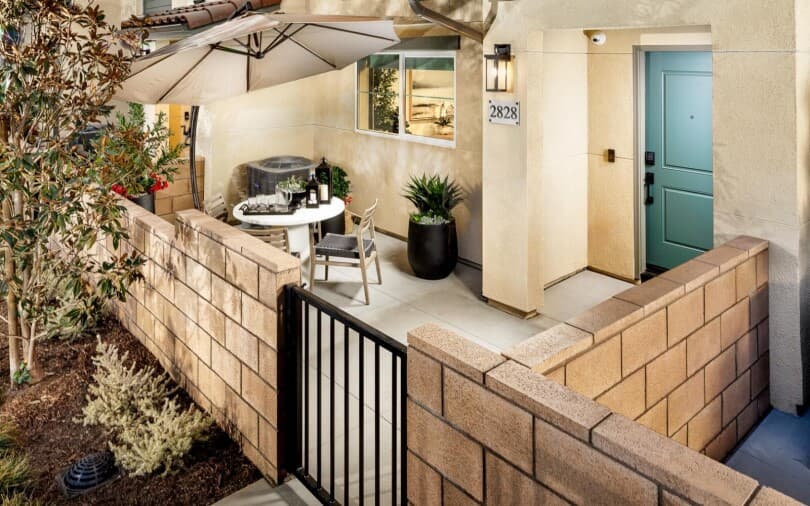
Residence 4 Floor Plan, Townhomes Collection, Magnolia Community, Arcadia, California
Courtyard or Enclosed Layout
Smaller yards or urban homes may have a courtyard-style yard enclosed by walls, fences, or greenery. This yard style creates a cozy and private retreat, ideal in an urban setting where space is limited, but privacy is still a priority. Courtyards are great for container gardens and quaint seating areas, perfect for intimate conversation or quiet reading.
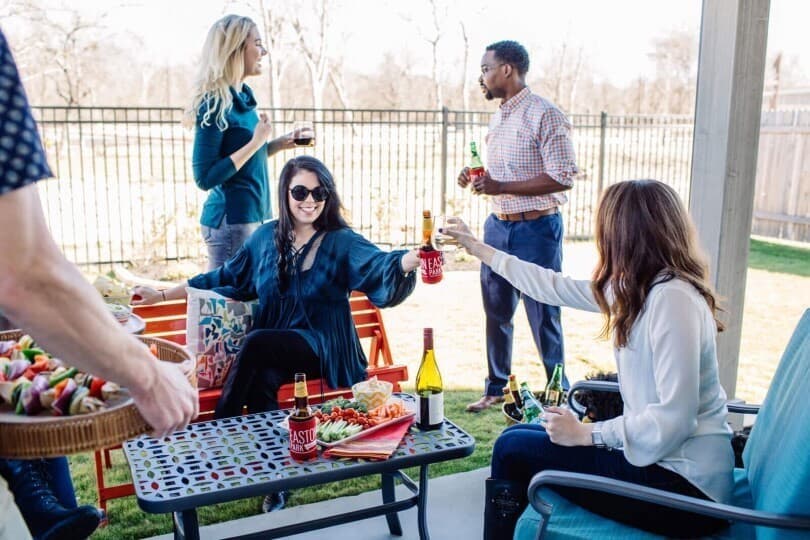
Easton Park Community, Austin, Texas
No matter the size of your yard, thoughtful planning and smart design choices can elevate it into a functional, beautiful, and enjoyable space. Focus on creating a space that fits your lifestyle, meets your family’s needs, and enhances your home.
Looking for more? Check out our blog “Easy Ways to Spruce Up Your Patio for Spring” for tips, inspiration, and practical advice to help you create the patio of your dreams!
When you’re ready to find your new home, explore where we build and connect with our sales team to learn more. We’ll be expecting you!

